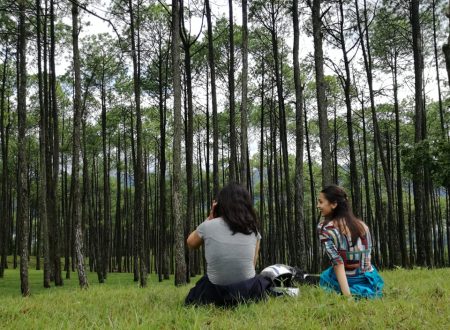Nepal is a majestic country crowned by the snowy Himalayas, cradled by the plains, and crisscrossed by the life-giving rivers. To such a pulchritudinous country, the tourism industry is a piece of luck to build up the economy and raise the standards to high levels.
Tourism, often taken as a smokeless industry, attracts tourists by facilitating them with all the hypnotic beauty of a place or by the services being provided. As the primary source of foreign currency to renowned the culture and tradition of Nepal to the world, tourism has a lot of plus points to the country.
Knowing numerous benefits of the tourism industry, it was a considerable initiative by the Ministry of Culture, Tourism, and Civil Aviation to announce a tourism campaign named “Visit Nepal 2020” to reinforce and endorse the tourism industry of Nepal. For the overall victory of this campaign, the Nepal Government had separated 5 sectors, including Heritages, Wildlife, Culture, Religion, and Adventure. The history of the Tourism Year dates back to 1998 AD in Nepal.
Similarly, in 2011 AD, the Government of Nepal announced another Tourism Year, which remained on the up and up. Later, a similar campaign was again promoted in 2015 AD, which remained ineffectual due to the catastrophic earthquake. This campaign was postponed to 2020 AD, which also went in vain due to the corona outbreak in the world. Perhaps, tourism is one of the hardest-hit sectors of the Nepalese economy.
The coronavirus from the seafood market of Wuhan, China, spread worldwide with such a tremendous speed that no one had ever imagined. It took the form of a pandemic and left the world unconditionally locked up in rooms with the consternation of death and cries all over. It is such a lethal situation to the whole world. Not only Nepal but the world is paying for this. Its effect can be directly seen in the world economy. Nepal, being a neighboring country to China, was at a very high risk of the pandemic.
Realizing the ramifications of the pandemic, the Government of Nepal had to cancel the tourism year, including all the international flights. The main tourist attraction places had to be closed to maintain health security. Nepal went through a relatively strict lockdown on March 24, with the number of CoVID-19 cases deficient in the region. Gradually, the number of confirmed cases started to rise due to the poor government delivery service and the entry of Nepalese immigrants from neighboring countries.
With the outbreak of the COVID pandemic, countries banned the movement of people as preventive measures to curb the spread of the virus. Transportations, hotels, and restaurants are the worst-hit sectors by COVID-19, and these sectors are directly linked with the tourism industry. The worldwide lockdown completely stopped the movement of people. Consequently, the labor-intensive tourism industry disintegrated entirely with the arrival of the pandemic.
With the launch of the Visit Nepal-2020 campaign, Nepal was expecting to attract two million tourists worldwide. Still, due to the impact of coronavirus, the campaign got canceled, which devastated the hospitality and tourism-related business activities. The tourist arrival rate has declined below 10% from 70%, which is incredibly a significant loss to a tourist destination country like Nepal. Being one of the major industries, the tourism sector has contributed about 8% to Nepal’s economy.
Likewise, the cancellation of all spring mountaineering expeditions, including Everest ascents, has resulted in the work loss of around 23,000 tours, trekking, and mountain guides, as well as tourism personnel. Research explains that a tourist spends about $500-$600 on an average of 6 days of travel, excluding transportation costs in Nepal. This shows how fruitful the tourism industry is in Nepal. According to the Ministry of Tourism, 129-star hotels and 1151 non-star hotels add up to around 44,000 beds in Nepal, providing employment opportunities to 5,73,000 people as of 2018. The tourism sector is experiencing a rapid and sharp drop in demand and a surge in job losses globally, including in Nepal.
Three-quarters of people employed in the tourism industry have informal jobs leaving them with no income and security. Over 4100 tourist guides, 16000 trekking guides, two hundred river guides, hundreds of naturalists, and many other people holding their job in the tourism sector have lost their livelihood due to the pandemic.
Likewise, over 65 tourist transportation facilitators employ over 4000 drivers and workers who are currently jobless. This clearly shows that even when other sectors start operating their jobs, the tourism sector and other hospitality services will be the last to recover their position.
Although Tourism is one of the prominent and fastest-growing industries in Nepal, Government is showing no attention and interest whatsoever to compensate the informal workers of the industry. In other countries like Bhutan and the USA, the government provides alternate jobs and even some benefit cheques to the people working in those sectors, but in Nepal, no concrete steps have been taken.
Reference:
–COVID-19: IMPACT ON TOURISM INDUSTRY OF NEPAL, 2020
Read More From Rhythm Bhetwal:
Follow Offline Thinker on Facebook, Twitter, and Instagram. You can send us your writings at connect.offlinethinker@gmail.com







